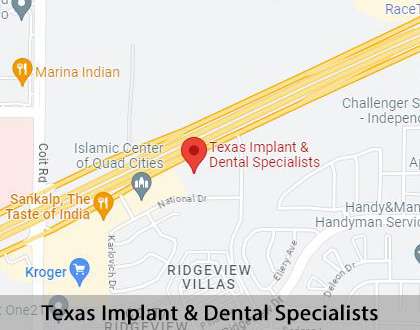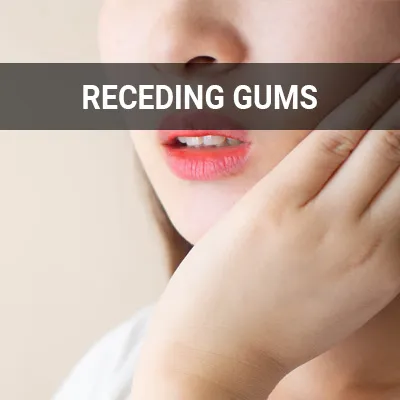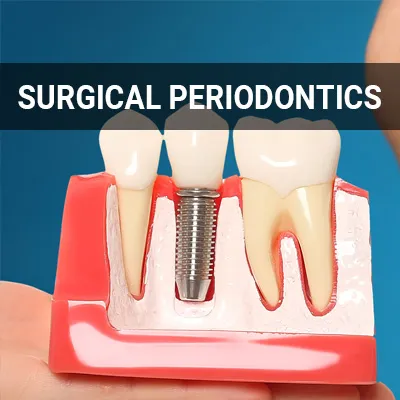Pinhole® Surgical Technique Plano, TX
The Pinhole® Surgical Technique is a non-invasive procedure that helps resolve gum recession. Gum recession typically indicates severe tooth decay and can lead to bone and tooth loss when left untreated. It also affects the physical appearance of a person's smile as the teeth become elongated. The PinHole technique improves both the function and aesthetics of your smile without the need for surgery.
At Texas Implant & Dental Specialists, we offer the Pinhole surgical technique treatments for patients with gum recession who are looking for non-invasive treatment. Our team can help you achieve your desired smile without the use of a scalpel or sutures. To learn more about a procedure or schedule an appointment, call (972) 535-6555 today.
What is PinHole Surgical Technique?
The Chao Pinhole® Surgical Technique (PST), invented and patented by John Chao, DDS, MAGD, is a scalpel-free, suture-free procedure for correcting gum recession. Through a small hole made by a needle, the dental practitioner uses specially designed instruments to gently loosen the gum tissue and glide it over the receded part of the tooth. Since there is no cutting or stitching, patients can expect minimal post-operative symptoms, such as pain, swelling, and bleeding.
Receding gums can weaken the teeth. Gum recession can also create unnecessary teeth sensitivity and root damage, leading to tooth loss. The pinhole surgical technique treats gum recession and repairs gum tissue without the need for invasive surgery. Most patients also are pleasantly surprised by the instant cosmetic improvement.
“The Chao Pinhole® Surgical Technique (PST) … is a scalpel-free, suture-free procedure for correcting gum recession.”
The Treatment Process
The Pinhole surgical technique can be done in one or two appointments, depending on the patient's condition and personal preference. We begin the procedure by administering anesthesia to keep the patient comfortable and still during treatment. Once the patient is numb, we create a pinhole in the receding gum tissue.
We then use a special device to gently move the gum tissue by peeling and stretching the gum into a healthier and more suitable position on the tooth or teeth. Once the gum tissue is properly positioned and looks natural, the dentist inserts collagen strips into the pinhole in the gums. These strips keep the gums in place in a much more minimally invasive way and help create new tissue that will ultimately secure the gums in their new location.
“Once the patient is numb, we create a pinhole in the receding gum tissue.”
How to Prepare for Treatment
Prior to treatment, we will need to schedule a consultation and cleaning visit. The teeth need professional cleaning in order for the treatment to go as desired. We will determine the cause of the patient's gum recession and discuss ways they can maintain healthy teeth and gums before and after the Pinhole procedure.
Patients can prepare for treatment by reading about the procedure ahead of time and understanding what is involved. There is not much preparation needed before the appointment. However, after-care instructions may require lifestyle and habit changes, including diet and hygiene care. We will discuss these at the end of the patient's procedure. Some patients may also need to schedule a follow-up visit to ensure the treatment was successful and the gums are healing as desired.
“Patients can prepare for treatment by reading about the procedure ahead of time and understanding what is involved.”
Check out what others are saying about our dental services on Yelp: Pinhole® Surgical Technique in Plano, TX
Benefits of the Pinhole Surgical Technique
Traditional gum recession treatments involve the use of donor tissue or soft tissue grafts in order to rebuild the gumline. During this more traditional treatment, soft tissue is sutured in place and joins with existing gum tissue as it heals. While this treatment is effective, comparable results with better patient experience can be achieved through the Pinhole Surgical Technique. In a 2017 case study, 96.7% of patients reported minimal discomfort and favorable esthetic outcomes.
The benefits of the Pinhole Surgical Technique include:
- Excellent, natural-looking, long-lasting results
- Faster recovery for the patient than traditional grafting
- Less discomfort for the patient after treatment
- No need for scalpels or invasive surgical tools
- No need to take donor tissue from the patient’s palate
- No need for uncomfortable sutures
“While this traditional grafting treatment is effective, comparable results with better patient experience can be achieved through the Pinhole® Surgical Technique.”
Questions Answered on This Page
Q. What is the Pinhole Surgical Technique?
Q. What is the process of the Pinhole surgical technique?
Q. How can I prepare for the Pinhole treatment?
Q. What are the benefits of the Pinhole surgical technique?
People Also Ask
Q. What are the common causes of gum recession?
Q. What are the different types of surgical periodontics?
Q. What are some possible complications of unhealthy gums?
Q. How can a periodontist reduce the impact of gum disease?
Q. What are the most common cause of periodontal tooth loss?
Q. What is the purpose of therapeutic treatments for periodontal disease?
Frequently Asked Questions
Q. Does the Pinhole procedure hurt?
A. We administer anesthesia for all of our patients. Some may only require a local anesthetic which numbs the treatment area only. Others may require general anesthesia in which they would be asleep throughout the procedure. Nonetheless, the patient should feel no pain. There may be slight discomfort after the anesthesia wears off. However, it can be relieved through over-the-counter pain medication.
Q. What is the recovery period like?
A. Patients may experience slight discomfort and soreness in the gums after the procedure, which is normal. You may need to alter your diet and hygiene habits to keep the site clean and allow it to heal properly. We will discuss what to do after the procedure, and we may ask you not to brush for a certain period of time. While you should be able to return to your regular diet the evening after your procedure, you may want to limit yourself to foods that will not irritate your gums for a few days.
Q. How long does the Pinhole procedure take?
A. The length of time required for treatment will vary between people and depends on how many teeth need to be treated. The procedure typically takes 10 to 15 minutes for each tooth. However, it may take less time when an entire arch or quadrant is treated in one session. The entire mouth can take up to two hours or more. This will be discussed during the consultation appointment.
Q. How long will it take for my gums to heal?
A. Patients should be able to resume normal activities the day of or the day after their procedure. The gums typically heal in a few days, and swelling may last for up to 10 days. However, any complications, such as excessive or persistent bleeding, should be communicated to your dentist immediately.
Q. How long do results last after the Pinhole procedure?
A. Results can last for years or decades with proper care and maintenance. It is important that patients follow all after-care instructions and continually visit their dentist for routine checkups and cleanings to mitigate gum disease and prevent their condition from recurring.
Start Feeling Better – Visit Us Today
By visiting us as soon as possible, our team can help get you the professional treatment you need. Instead of waiting around and allowing the symptoms to get worse, we can provide you with treatment options.
Definitions
Call Us Today
Pinhole consultations and treatments are available at Texas Implant & Dental Specialists. Our team looks forward to treating you and creating the smile of your dreams. Call our office at 972-535-6555 to learn more or schedule an appointment.
Helpful Related Links
- American Academy of Periodontology (AAP). American Academy of Periodontology (AAP). 2023
- Center for Disease Control and Prevention (CDC), Periodontal Disease Page. Center for Disease Control and Prevention (CDC), Periodontal Disease Page. 2023
- WebMD, What Is a Periodontist?. WebMD, What Is a Periodontist?. 2023
About our business and website security
- Texas Implant & Dental Specialists was established in 2007.
- We accept the following payment methods: American Express, Cash, Check, Discover, MasterCard, and Visa
- We serve patients from the following counties: Collin County, Denton County and Dallas County
- We serve patients from the following cities: Plano, Frisco, Allen, McKinney, Garland, Richardson, Prosper, Wylie, Murphy, and Dallas
- Norton Safe Web. View Details
- Trend Micro Site Safety Center. View Details
Back to top of Pinhole® Surgical Technique










